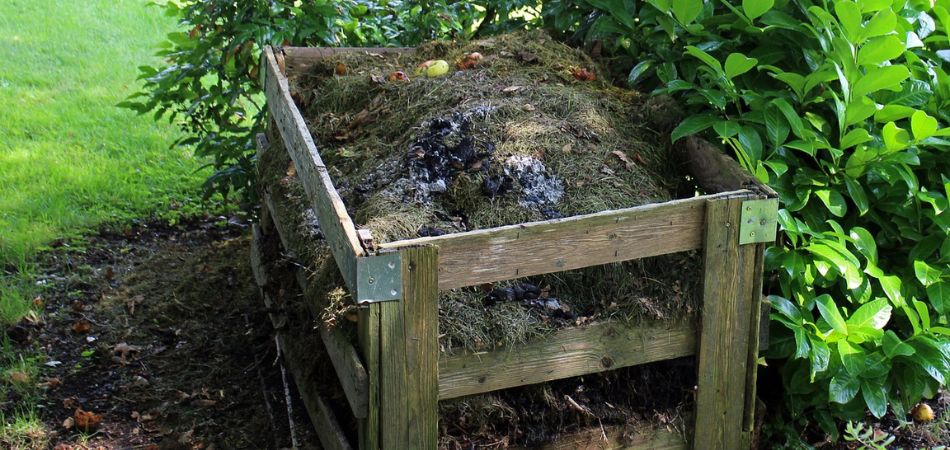Spring is the perfect time to breathe new life into your garden, and one of the most eco-friendly ways to do so is by embracing the art of composting. In the land of 10,000 lakes and a rich agricultural heritage, Minnesota provides an ideal backdrop for composting enthusiasts. Whether you’re a gardening novice or an experienced green thumb, let’s explore the basics of composting to kickstart your sustainable journey this spring.
Understanding the Basics: What is Composting?
Composting is the natural process of converting organic materials into a nutrient-rich soil conditioner. The key components are greens (nitrogen-rich) and browns (carbon-rich). Greens (Nitrogen-Rich): Includes kitchen scraps like fruit and vegetable peels, coffee grounds, and fresh yard waste.
Promotes microbial activity, generating heat and accelerating decomposition. Browns (Carbon-Rich): Comprises dry materials such as dried leaves, straw, shredded newspaper, and small twigs.
Provides energy for microorganisms and maintains compost structure. Maintaining a balanced 30:1 carbon-to-nitrogen ratio is crucial. Greens and browns work together to foster efficient decomposition, creating nutrient-rich compost for healthier gardens. Remember to avoid meat, dairy, and oily foods in your compost pile for optimal results.
Check Out All Of Our Garden Accessories Here!
Setting the Stage: Choosing the Right Location
Selecting an optimal location is crucial for successful composting. Prioritize Good Drainage: Choose an area with good drainage to prevent waterlogging, ensuring optimal composting conditions. Elevate the compost pile if the chosen spot tends to collect water. Emphasize Easy Access: Opt for a location that is easily accessible for routine maintenance tasks like turning, adding materials, and harvesting compost. Proximity to the kitchen encourages consistent disposal of kitchen scraps, fostering a sustainable habit.
Consider Sunlight and Shade
Place the compost pile in a partially shaded area to regulate temperature and moisture levels. Balance sunlight exposure to avoid excessive drying or slowing of the decomposition process.
Check Out All Of Our Garden Accessories Here!
Mind Neighbors and Aesthetics
Be considerate of neighbors and maintain an aesthetically pleasing composting area. Striking a balance ensures acceptance and enhances the visual appeal of your compost setup. Choosing a well-drained, accessible location near the kitchen streamlines the composting process and seamlessly integrates sustainable practices into your daily routine. This thoughtful setup will yield nutrient-rich compost to enhance your garden’s vitality.
Building Your Compost Bin: DIY or Store-Bought?
When it comes to composting, the choice between a DIY compost bin and a store-bought alternative depends on your preferences and available resources. Building your compost bin using cost-effective materials like pallets or wire mesh offers not only a budget-friendly option but also an opportunity for customization in size and design, allowing you to tailor it to your space and needs. This DIY approach can be an educational experience, deepening your understanding of composting principles. On the other hand, store-bought compost bins provide convenience for those with time constraints, offering ready-made solutions equipped with features like aeration systems and easy access. Many store-bought bins are also designed with aesthetics in mind, ensuring functionality without compromising visual appeal. Whether you choose a hands-on DIY project or a store-bought solution, the goal remains the same – to create an efficient composting system that yields nutrient-rich compost for the benefit of your garden.
Check Out All Of Our Garden Accessories Here!
Materials for Success: What Goes In and What Stays Out
Greens that are ok: Kitchen scraps, fresh yard waste, and manure. Browns that are ok: Dry leaves, straw, and shredded newspaper. Avoid composting meat, dairy, and pet waste.
Balancing Act: Achieving the Right Carbon-Nitrogen Ratio
Maintain a balanced 30:1 ratio of carbon to nitrogen for optimal decomposition. Troubleshooting common imbalances and their solutions.
Turning and Watering: Compost Maintenance Tips
Regularly turn the compost to aerate and accelerate the decomposition process. Keep the compost moist but not waterlogged.
Check Out All Of Our Garden Accessories Here!
Composting in Minnesota: Addressing Seasonal Challenges
Navigating the colder months with winter composting strategies. Using insulation and covers to protect your compost during frosty nights.
Harvesting “Black Gold”: Knowing When Your Compost is Ready
Harvesting “black gold,” or mature compost, is a rewarding moment for gardeners, marked by distinct visual and olfactory indicators. The compost is deemed ready when it exhibits a dark, crumbly texture with no recognizable materials, emitting a sweet, earthy scent. The stabilization of temperature, matching the ambient surroundings, further signifies the completion of the composting process. Achieving this maturity requires patience, typically taking weeks to months depending on the composting method and materials used. Harvesting techniques such as screening or sifting can refine the compost, while layering allows for varied stages of decomposition. Incorporating this nutrient-rich compost into your spring garden can be done through top dressing, blending with planting mixes, or as a natural mulch. This final step ensures that your garden receives the full benefits of composting – improved soil fertility, optimal plant growth, and the establishment of a flourishing and sustainable garden environment.
Community Composting: Joining the Green Movement
Exploring local composting initiatives and community composting options. Connecting with fellow composting enthusiasts for tips and support.
As you embark on your composting journey this spring, remember that every kitchen scrap and yard waste contributes to a healthier, more sustainable garden. Embrace the simplicity of composting, connect with fellow gardeners, and witness the transformative power of “black gold” as you cultivate a greener, more vibrant Minnesota landscape. Happy composting!

